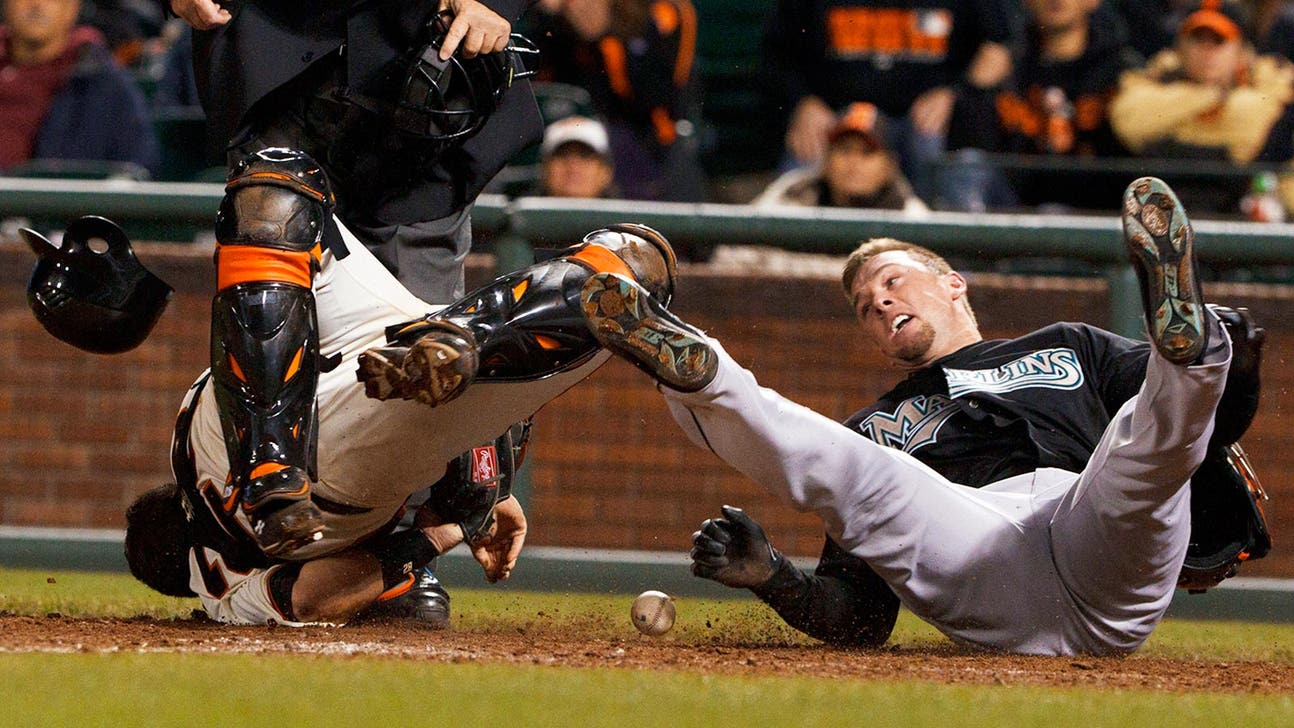
'Posey Rule' protects players without going too far

We will call it the Buster Posey Rule. How could we not?
Major League Baseball and the players' union made the long-awaited move official Monday, roughly two years and nine months after the play that literally changed the sport.
During a May 25, 2011, extra-inning game in San Francisco, Marlins reserve Scott Cousins took a course slightly inside the third-base line and initiated contact with Posey, the Giants' franchise catcher, on a play at the plate. Posey's leg shattered. The Giants' season never recovered. And a lot of well-intentioned baseball people started thinking about finding a better way.
Finally, we have a solution, in the form of Rule 7.13: Baseball announced -- effective this year -- that a runner "may not deviate from his direct pathway to the plate in order to initiate contact with the catcher." Similarly, catchers are not allowed to block the plate unless they are in possession of the ball. If the runner violates the protocol, he's out. If the catcher errs, the runner is safe. Fair is fair.
After the basic language, the rule includes an important comment: Runners are forbidden from lowering their shoulders or "pushing through" the catcher with "hands, elbows or arms." The rule doesn't explicitly prohibit a runner from sprinting through a catcher -- but he'd have to do so without leaning in with his upper body at the point of contact. And that would look awkward, wouldn't it?
So, the take-home message is this: If a runner wants to be certain that he won't be called out for overzealousness, he needs to slide.
The owners' motivation is clear: With player salaries increasing annually, they can't stomach the thought of losing a multimillion-dollar player to an unnecessary injury. The catastrophic injury to Posey, one of the game's greatest stars, became a watershed moment, weighing as heavily on the sport's consciousness as the growing concern over concussions (even as Posey recovered to become 2012 National League MVP).
Although there's room for interpretation, the desire of the commissioner's office is clear. As the MLB statement said: "Beginning immediately, (clubs) will be required to train their runners to slide and their catchers to provide the runner with a pathway to reach the plate at all levels in their organizations."
This will be good for baseball -- in part because of what it doesn't do. It doesn't legislate contact out of plays at the plate. It doesn't necessarily ban all "collisions," in the truest sense of that term. But it reduces the risk of serious injury in two significant ways: Players no longer have the right to seek contact when the catcher isn't blocking the plate, as was the case with Cousins and Posey, and both parties have a clearer idea of what to expect on what had been an ambiguous play.
Some players bowled over catchers because they wanted to earn respect among teammates or create energy in the dugout -- rather than take the most tactical approach in trying to score the run. MLB is correct to remove that rationale. As I wrote of Cousins in the immediate aftermath of the Posey injury: "Cousins, 26, is a career .227 hitter who is currently doing all he can to remain in the big leagues as a reserve outfielder and left-handed pinch hitter. On that play, he was trying to help his team win an important game. We can empathize with that. It wasn't a 'dirty' play. But it was a needless one. And it is MLB, not baserunners, who bear the greatest responsibility in avoiding those types of collisions going forward."
Not quite three years after the Posey play, MLB has enacted a well-conceived, commonsense rule to govern the fundamental act of scoring a run. (That's Billy Hamilton procedural speed, by the standards of our national pastime.) As if baseball is flaunting its newfound progressivism, the legality of contact at home plate is reviewable under this year's expanded instant replay.
Traditionalists shouldn't despair. There will be contact at home plate, just as there is at second base on hard takeout slides. Catchers and baserunners still are going to wrangle for the most precious piece of real estate inside every baseball stadium. But now it's a safer, fairer fight.










